Researchers at the Rijksmuseum in Amsterdam have discovered the drawing of the dog on which Rembrandt (Rembrandt van Rijn; Leiden, 1606 - Amsterdam, 1669) relied to paint the barking dog in The Night Watch, one of his most famous masterpieces. It is a drawing by Adriaen van de Venne (Delft 1590 - The Hague, 1662) from the early 17th century, as revealed by art-historical research conducted as part ofOperation Night Watch, the largest and most comprehensive study ever conducted on Rembrandt’s most famous painting. The remarkable resemblance between Rembrandt’s dog and the dog in the drawing, which has been in the Rijksmuseum’s collection for more than a hundred years, was recently discovered.
The most striking similarity is the identical rotation of both dogs’ heads: the two animals look upward in the same direction, with their mouths slightly open. Another matching feature is the dark line indicating the position of the right eye. In addition, the skull cap of both animals is divided into two sections, and their collars are very similar. There are small differences, however: the nose of the dog in the Night Watch, for example, is slightly flatter and the ears hang lower. Rembrandt also made his dog’s mouth slightly more open and added a tongue.
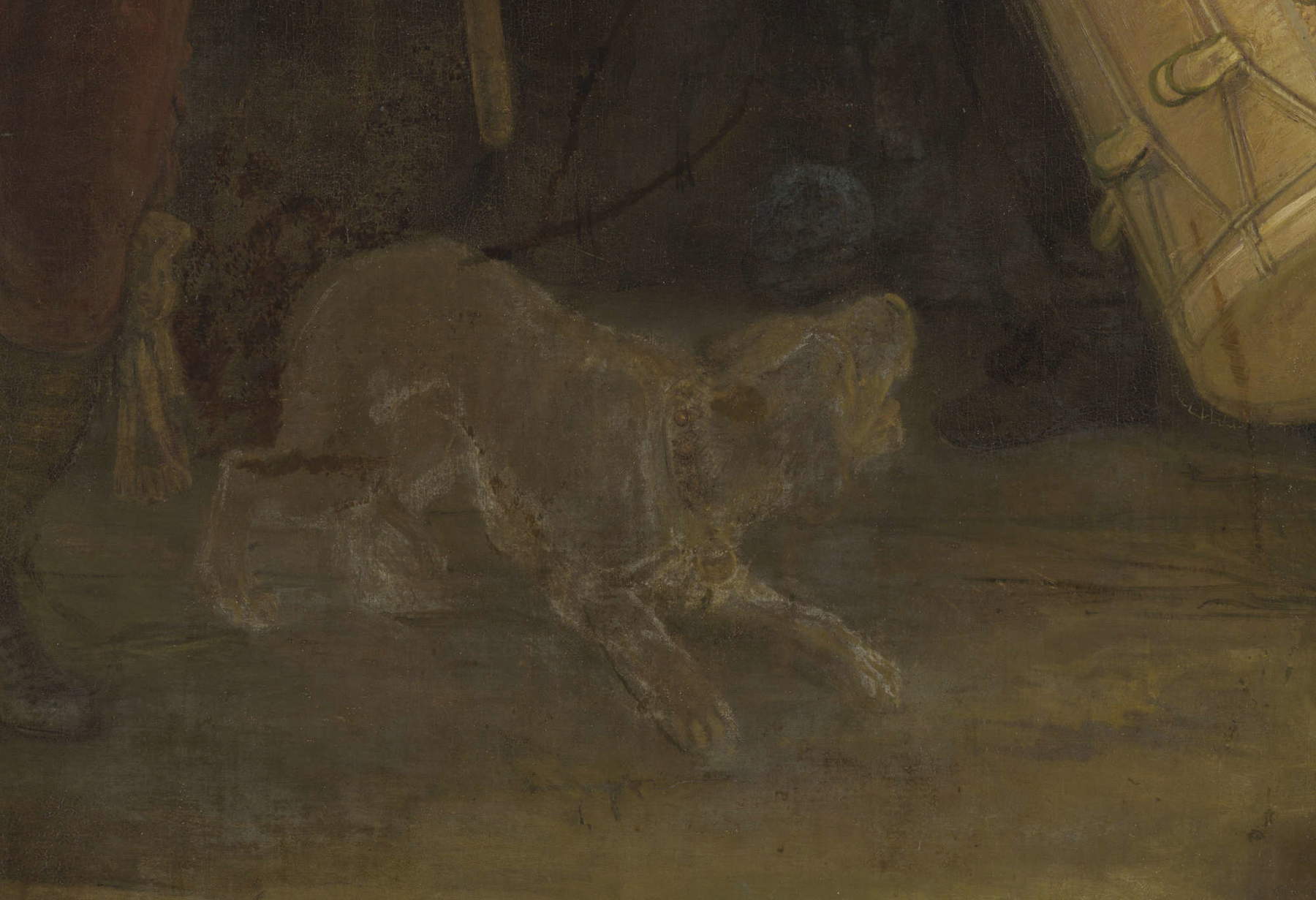
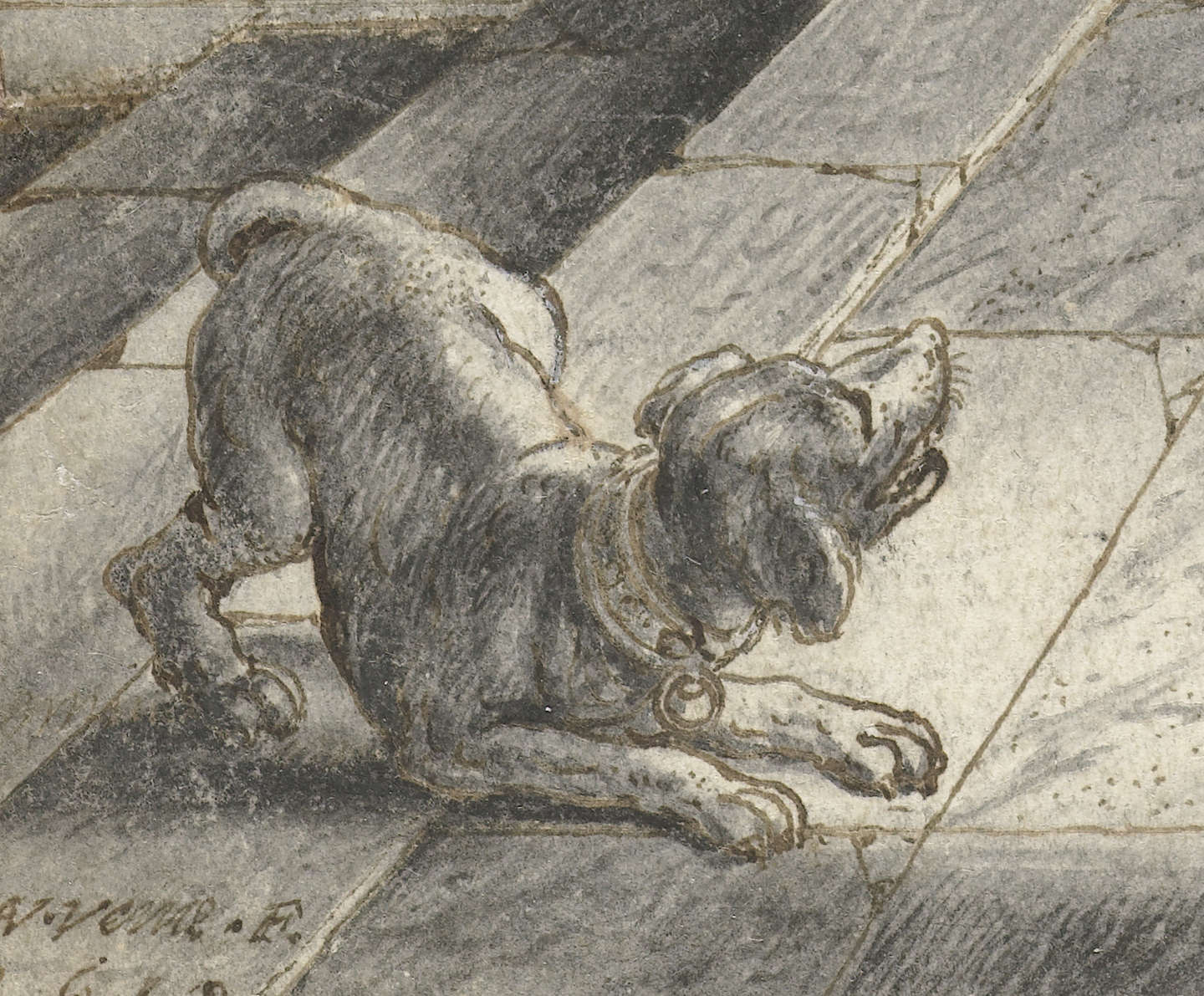
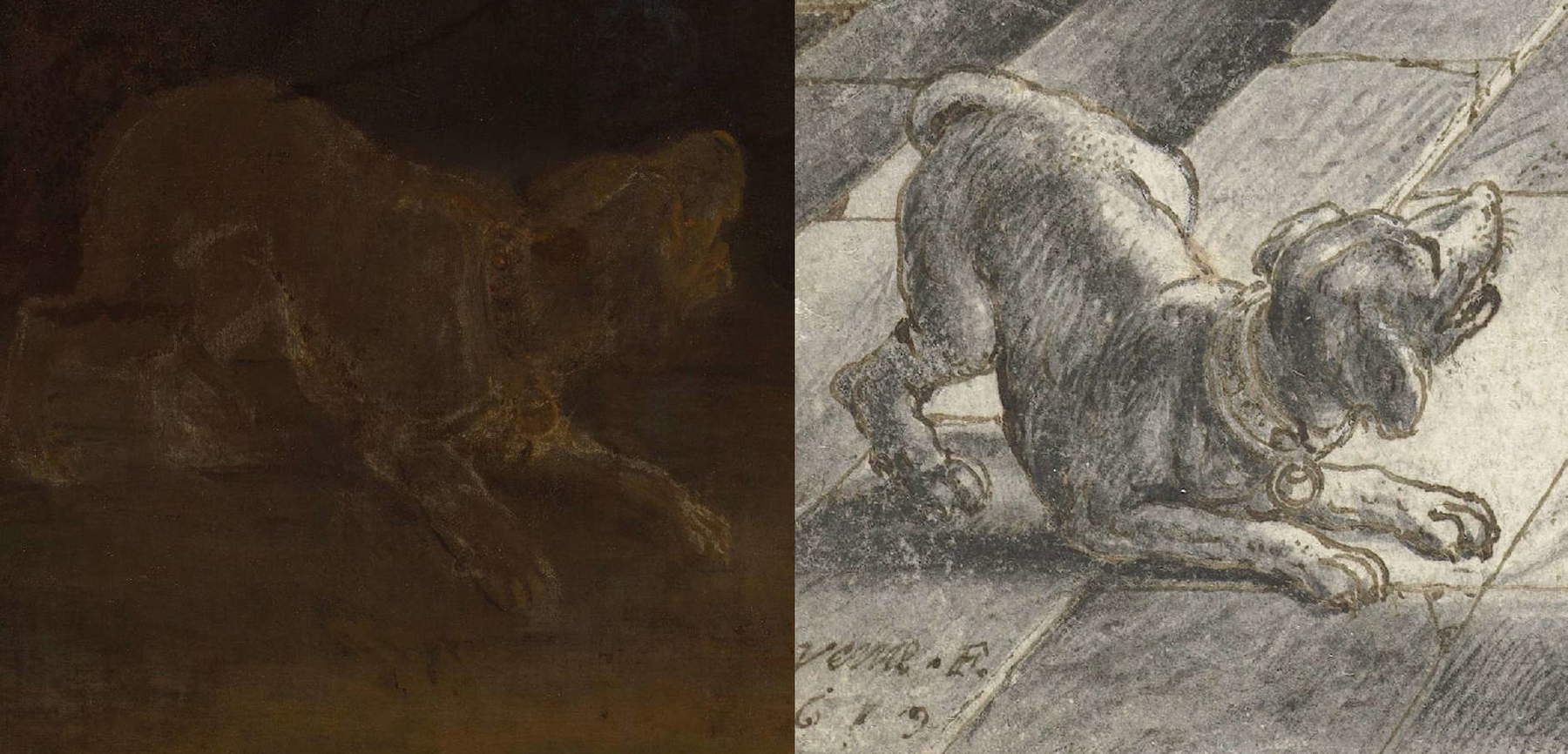
The pose of the two dogs is also similar. As in Rembrandt’s painting, Van de Venne’s drawing depicts the dog positioned diagonally within the pictorial plane, with its upper body close to the ground. The main difference is that the dog in The Night Watch is standing on all four legs, while Van de Venne’s is lying on its front legs, with its chest resting on the ground. Unlike the drawing, in The Night Watch the tail and hind legs are visible. Again, in the drawing underneath the painting, which was recently discovered and made visible by MA-XRF (macrofluorescence X-ray analysis), it can be seen that the dog in The Night Watch was initially depicted with its right front leg more bent and its chest closer to the ground. In this first depiction, the pose of the dog in the Night Watch was even more similar to Van de Venne’s drawing.
The drawing was made in 1619 by artist, poet and publisher Adriaen van de Venne and depicts the biblical story of Joseph tempted by Putifares’ wife. It is a design for the frontispiece of Self-stryt, dat is, Krachtighe beweginghe van Vlees ende Gheest(Inner Conflict, or The Mighty Motions Between the Flesh and the Spirit), a popular book by Jacob Cats first published in 1620. Besides the similarities between the dogs, there are other indications that Rembrandt must have been familiar with Van de Venne’s drawing. Rembrandt explored the same theme in his 1655 painting Joseph Accused by Putiphar’s Wife, in which Joseph’s hand gesture and upward gaze strongly recall the pose of the central figure of Joseph in the drawing. An etching by Rembrandt entitled Joseph and Putiphar’s Wife (1634) also bears similarities to the bed scene in the background of the drawing. Rembrandt had a large collection of prints and drawings by other artists, but it is not known whether he included Van de Venne’s drawing. He used a variety of prints, drawings and other existing sources for the poses of several militiamen portrayed in the Night Watch.
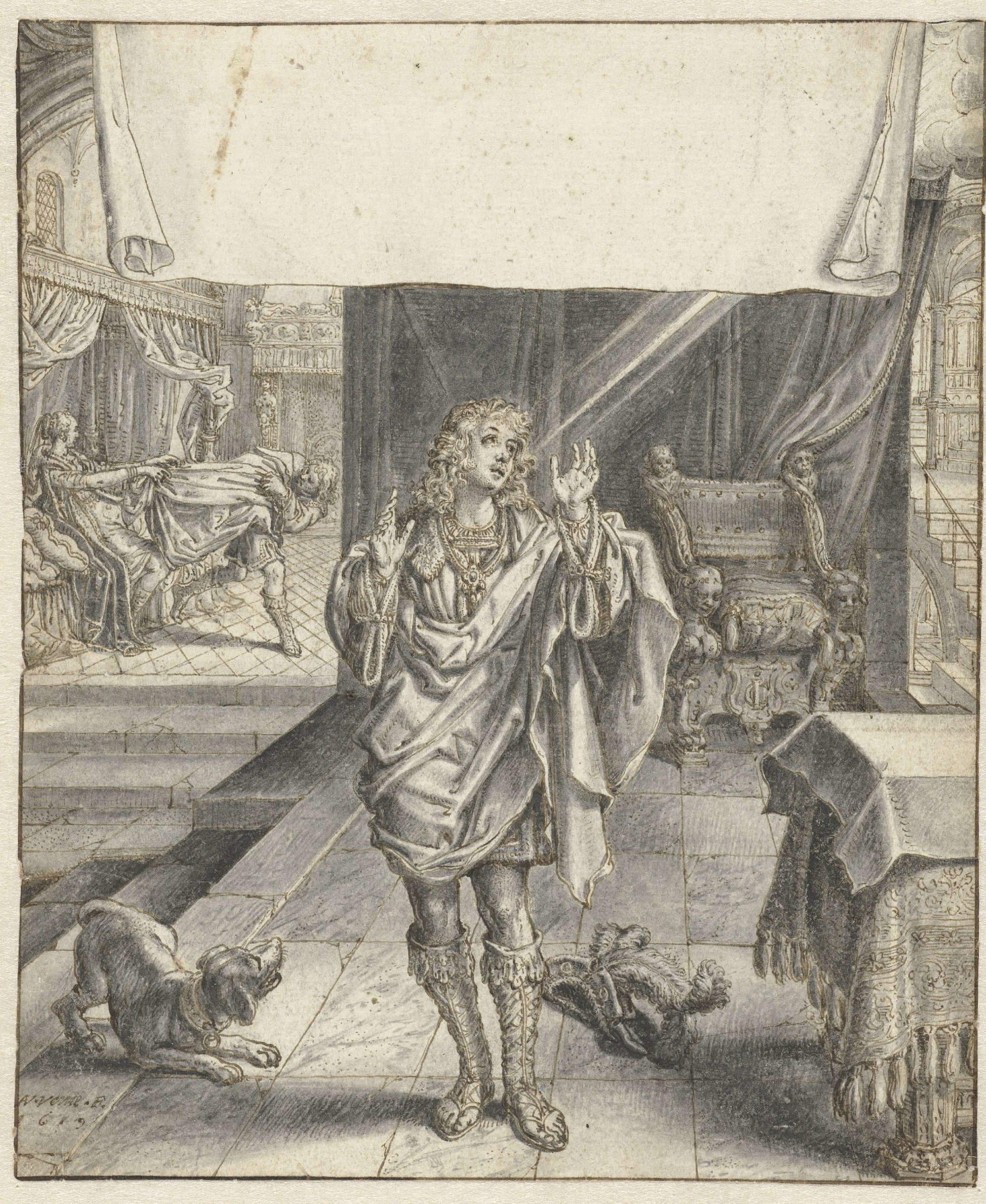

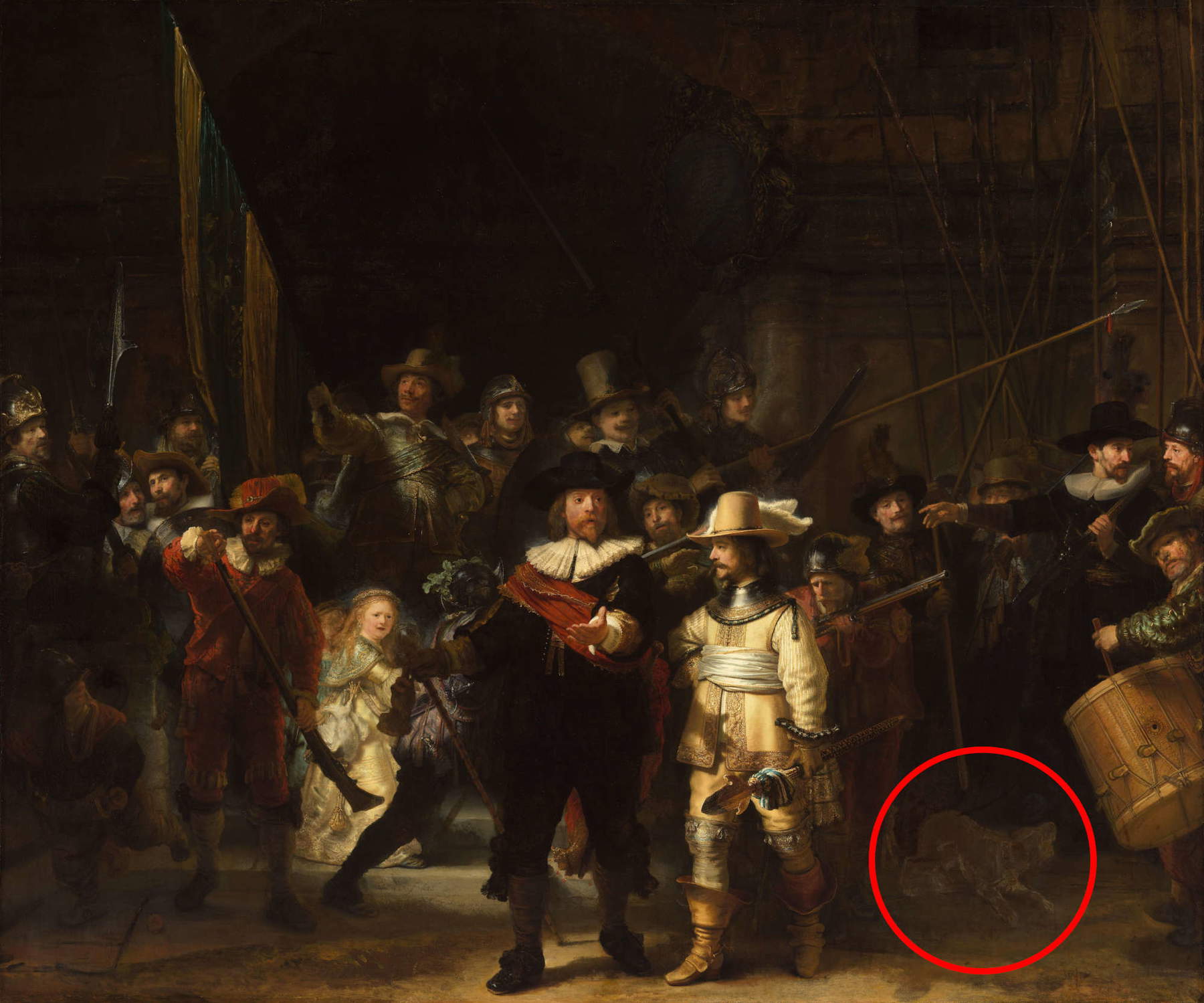

“It is amazing that almost 400 years after it was created, new discoveries continue to be made about one of the most studied paintings in the world,” points out Taco Dibbits, director general of the Rijksmuseum. “This discovery gives us further insight into Rembrandt’s thought processes during the creation of this work.”
“When I saw the drawing in an exhibition,” says Anne Lenders, curator ofOperation Night Watch, "I immediately thought of the dog in Night Watch. The dog’s head, collar, and pose bear such a strong resemblance that one can only assume that Rembrandt used this drawing as inspiration. Subsequent research confirmed this."
 |
| The Night Watch dog: discovered the artist who inspired Rembrandt |
Warning: the translation into English of the original Italian article was created using automatic tools. We undertake to review all articles, but we do not guarantee the total absence of inaccuracies in the translation due to the program. You can find the original by clicking on the ITA button. If you find any mistake,please contact us.